MARKET INSIGHT – July 2025
MARKET INSIGHT
Prime Partners’ monthly analysis of global economic and financial market news.
Against all odds
While the geopolitical situation deteriorated significantly in June, with Israel and then the United States launching strikes on Iranian nuclear sites, the US stock market continued its rebound unabated. In contrast, European equities lagged, bringing their 2025 performance closer to that of their American counterparts, which were still trailing far behind just three months ago.
While the S&P 500 index ended the second quarter of the year at historic highs, it is interesting to note that less than ten percent of its constituent stocks are at their highest valuation. This observation illustrates what was already the case in May, namely that the very strong rebound of recent weeks can be attributed mainly to a few major technology companies, led by Nvidia and Microsoft.
Financial market reactions are often perplexing, at least in the short term. The second half of June was a case in point, with a logical chain of events following the Israeli strikes on Iran, driving up the price of oil and spurring uncertainty among investors. The US participation in the bombing then led to fears of a wider conflagration in the Middle East, prompting expectations of a sharper rise in the price of oil. Nothing of the sort happened. Better still, the market judged Iran’s response to the US strikes to be timid, and probably a sign of the country’s great military weakness. As a result, traders saw crude oil prices fall sharply, below the levels seen prior to the first Israeli strikes.
Some would say that the American market is “sticking its head in the sand”, as the popular expression goes, and is extremely complacent about many of the economic and geopolitical realities of the moment. Others, on the contrary, will see in the recent behavior of US equities a great deal of pragmatism, rooted in particular in the artificial intelligence revolution and the very pro-business policies of the Trump administration. Before discussing some of these elements, we feel it is important to inform our readers that the expression “sticking one’s head in the sand” is based on a mistaken belief, as ostriches never actually bury their head in the ground or sand in the event of danger…
Today, there is no denying that we are witnessing a major technological revolution, justifying the huge investments made and hopes placed in AI
The V-shaped rebound we have witnessed over the past two months is, as we have already mentioned, due in no small part to the US technology sector and its considerable weight in the S&P 500 index. Today, there is no denying that we are witnessing a major technological revolution, justifying the huge investments made and hopes placed in AI. On this point, just about everyone agrees.
On other subjects, however, it is hard to reach a consensus. Starting with the questions of US government debt and the dollar. The greenback is going through a major devaluation phase, and the now infamous “Big Beautiful Bill” (BBB), if adopted, can only result in a worsening of the US debt trajectory for years to come. In this sense, and as we have already observed over the past few months, the international credibility of US Treasuries could suffer. As these are a kind of “collateral” for the international financial system, we must be very vigilant with regard to this development.
The second major question mark concerns tariffs, and hence the future shape of global trade. In a few days’ time, the three-month deadline granted by President Trump to the various countries for the purpose of negotiating with his administration will come to an end. To date, only one real deal has been officially concluded with the UK. The China-US trade relationship appears to be less tense than it was last April, although it does not yet offer a clearly defined framework for trade between the world’s two greatest powers. As for the European countries, they remain in a state of limbo at present, with no concrete way of gauging the stage reached in discussions between representatives of the “Old Continent” and those of the “New World”.
The third factor of uncertainty, and by no means the least, is the FED and interest rates. The relationship between Jerome Powell and Donald Trump is far from improving, with the former still in no hurry to implement the major rate cut demanded by the latter. The American President has made no secret of his fierce hostility towards the head of the central bank, whose official departure, scheduled for May 2026, could be accelerated by the possible appointment of a “shadow Fed Chair”, which would be a first in US history and, a priori, a development that would once again undermine the credibility and, above all, the independence of the institution.
Two of the three elements mentioned above are likely to see imminent developments. The BBB is adhering to an ambitious timeline, aiming for formal validation by both chambers of Congress by July 4. As for tariffs, the three-month “truce” announced by D. Trump on April 9 will come to an end on July 9. This will allow investors to evaluate the overall situation on these two fronts as they start the third quarter of the year and take in the first corporate results of Q2.
As for the EU, the outcome of the tariff negotiations will also be decisive in determining whether the bloc can rely on international trade to try and revitalize certain sectors of its economy, whose stretch of sluggish growth continues. The ECB is now expected to pause its interest-rate cuts and inflation is largely under control. A weak dollar is obviously not very good news for European exporters who, in addition to likely customs duties, will have to cope with an exchange rate that makes their products more expensive for American consumers.
There has been little news in recent weeks about the Chinese economy, for which each successive month echoes the last. A general crisis seems to have been averted despite the poor state of the property market, which it now seems good form not to talk about too much. The latest economic figures are far from those of a country with an annual growth target above five percent, but it is also impossible to ignore China’s clout in many areas, particularly technology. The markets have largely taken this into account since the beginning of the year, with emerging equities up more than 15%, led by China as the primary component in terms of capitalization.
The first few weeks of July should bring more clarity for investors, both in terms of upcoming trade deals and the Trump administration’s willingness to control the fiscal deficit over the next few years
Our central scenario remains that the US economy will see positive growth this year. The first few weeks of July should bring more clarity for investors, both in terms of upcoming trade deals and the Trump administration’s willingness to control the fiscal deficit over the next few years. We believe these two factors will be decisive in determining asset allocation for the second half of the year, particularly with regard to equity exposure. In addition, greater visibility on tariffs will allow key macroeconomic indicators to stabilize without being significantly impacted by exceptional measures related to customs duties or expectations thereof.
Our allocations continued to benefit from the market rebound in June. We hold sufficient exposure to large-cap technology stocks through a number of products. This was complemented by strong performance from emerging market equities. On the fixed-income side, the various segments we favor also contributed positively to the returns of our portfolios, while enabling them to display low volatility. Finally, we continue to favor gold and cash, whose virtues, both in terms of performance and protection, are proving invaluable in 2025.
It is worth noting that we are fully aware of the negative impact of the weak dollar on portfolios denominated in euros or Swiss francs. We advise investors to be mindful of their net exposure to the US dollar. Protection, particularly in Swiss francs, is certainly costly, but has ultimately proven effective when confronted with a dollar for which we struggle to find reasons to be optimistic in the medium term.
Rather than choosing between a glass half-empty or half-full, we are opting for agility in our portfolios. A little more visibility on the tariffs and fiscal fronts could turn 2025 into a good year for equities. Our allocations would quickly be adjusted for this. Conversely, it is too early at mid-year to rule out the hypothesis of an “uncontrolled” slide by the Trump administration, whose blunders the market has so far chosen not to punish too much. Like the real-world ostrich, we have no intention of burying our heads in the sand in the face of the major challenges of the weeks ahead.

